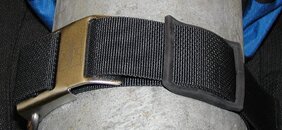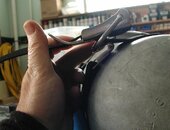HenrikBP
Contributor
I have a set of the Highland cam bands and while they cinch down tight, and I am able to "quick release" them. I don't much care for them. The quick release was less helpful than I thought it would be. So now it's really just annoying that the cam buckle can come apart.
Live and learn.
If I were shopping for cam bands for my backplate today I'd get a set of the low profile Dive Rite bands in your first link.
Henrik
Live and learn.
If I were shopping for cam bands for my backplate today I'd get a set of the low profile Dive Rite bands in your first link.
Henrik






